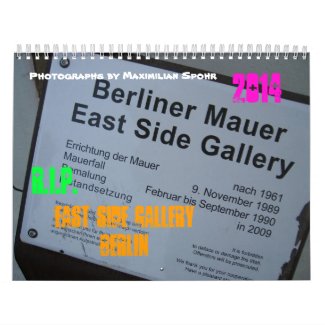The Berlin Wall: A Short History
The Berlin Wall (German: Berliner Mauer) was a barrier constructed by the German Democratic Republic (GDR, East Germany) starting on 13 August 1961, that completely cut off (by land) West Berlin from surrounding East Germany and from East Berlin. The barrier included guard towers placed along large concrete walls, which circumscribed a wide area (later known as the “death strip”) that contained anti-vehicle trenches, “fakir beds” and other defenses. The Eastern Bloc claimed that the wall was erected to protect its population from fascist elements conspiring to prevent the “will of the people” in building a socialist state in East Germany.
In practice, the Wall served to prevent the massive emigration and defection that marked East Germany and the communist Eastern Bloc during the post-World War II period.
The barrier included guard towers placed along large concrete walls, which circumscribed a wide area (later known as the “death strip”) that contained anti-vehicle trenches, “fakir beds” and other defenses. The Eastern Bloc claimed that the wall was erected to protect its population from fascist elements conspiring to prevent the “will of the people” in building a socialist state in East Germany. In practice, the Wall served to prevent the massive emigration and defection that marked East Germany and the communist Eastern Bloc during the post-World War II period.
In 1989, a series of radical political changes occurred in the Eastern Bloc, associated with the liberalization of the Eastern Bloc’s authoritarian systems and the erosion of political power in the pro-Soviet governments in nearby Poland and Hungary. After several weeks of civil unrest, the East German government announced on 9 November 1989 that all GDR citizens could visit West Germany and West Berlin. Crowds of East Germans crossed and climbed onto the wall, joined by West Germans on the other side in a celebratory atmosphere. Over the next few weeks, euphoric public and souvenir hunters chipped away parts of the wall; the governments later used industrial equipment to remove most of what was left. The physical wall was primarily destroyed in 1990. The fall of the Berlin Wall paved the way for German reunification, which was formally concluded on 3 October 1990.
Legacy
Little is left of the Wall at its original site, which was destroyed almost everywhere. Three long sections are still standing: an 80-metre-long (260 ft) piece of the first (westernmost) wall at the Topography of Terror, site of the former Gestapo headquarters, halfway between Checkpoint Charlie and Potsdamer Platz; a longer section of the second (easternmost) wall along the Spree River near the Oberbaumbrücke, nicknamed East Side Gallery; and a third section that is partly reconstructed, in the north at Bernauer Straße, which was turned into a memorial in 1999. Some other isolated fragments and a few watchtowers also remain in various parts of the city.
Wall Segments Around The World
Not all segments of the wall were ground up as the wall was being torn down. Many segments have been given to various institutions around the world. They can be found, for instance, in presidential and historical museums, lobbies of hotels and corporations, at universities and government buildings, and in public spaces around the world.
Wall Graffiti
[ezp grid_width=”888″ grid_cell_size=”medium” grid_cell_spacing=”30″ num_items=”8″ store_name=”pearl888″ search_term=”graffiti” associate_id=238056276830704041]


